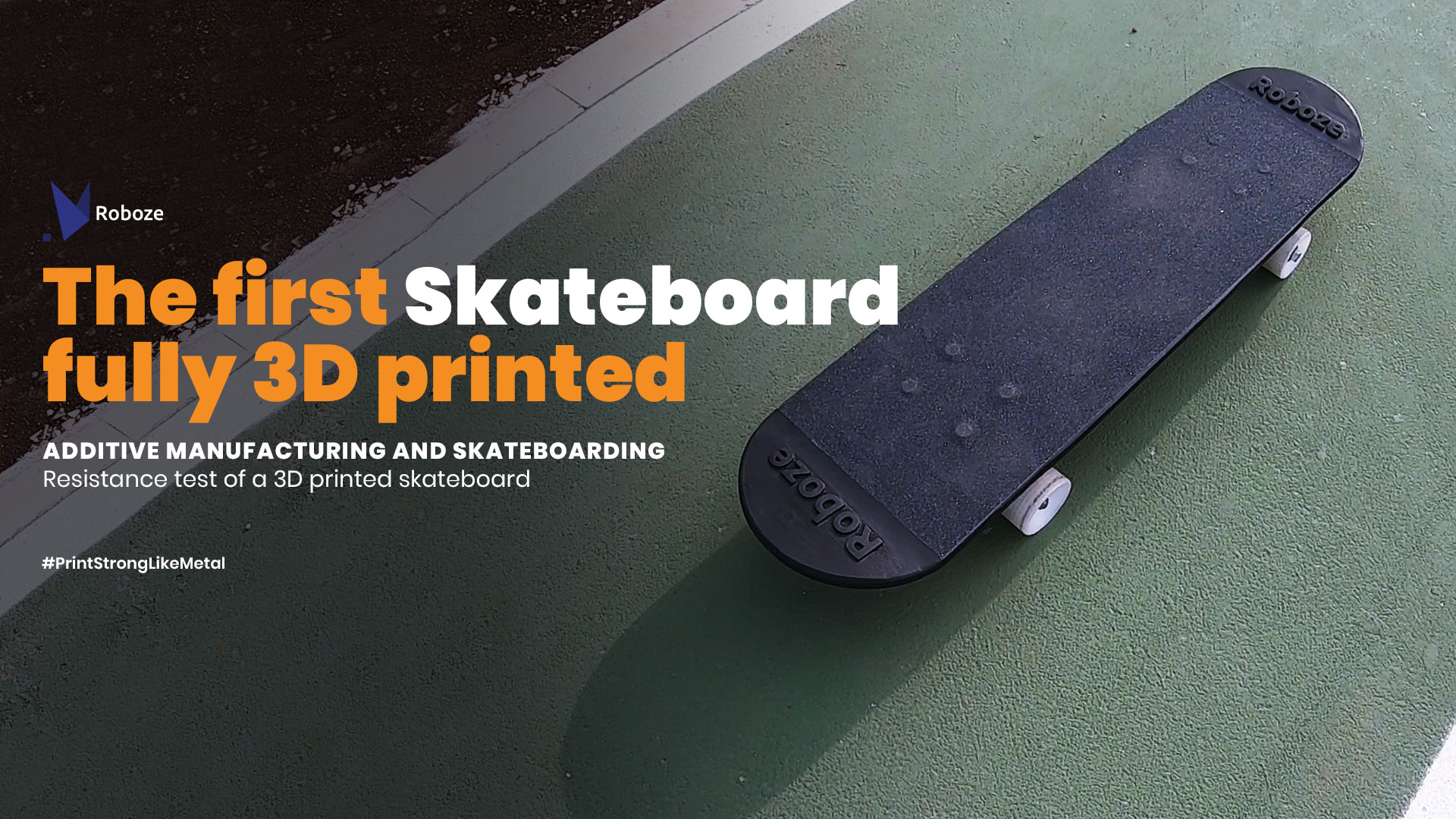Italian 3D printer manufacturer ROBOZE has created a fully 3D printed skateboard using Carbon PA, PEEK, Flex (TPE) and PP.
Made to demonstrate the applications of ROBOZE’s materials which “Print Strong Like Metal,” the board has been developed in partnership with Impact Surf Shop. Fabiano Lauciello, a professional skater, was selected to test it. “I was pleasantly surprised by the strength of [the] skateboard,” Lauciello stated.
“Despite complex manoeuvres, the skateboard resisted with no problems, proof of the real combination between additive manufacturing techniques and the production of consumer skateboards.”
A fully 3D printed skateboard
The skateboard’s body was 3D printed in Carbon PA, a Polyamide reinforced with 20% carbon fibers previously used to create 3D printed drone parts. According to ROBOZE, this material is one of the strongest and mechanically capable materials in the FFF/FDM 3D printing field.
Polypropylene (PP) was used to create the wheels of the skateboard due to its high resistance against impact and wear. Typically made from metal, the washers, which reduce friction to help the wheel turn faster, and the nuts on the board are 3D printed in PEEK. As stated by Lauciello, this material allowed for durability when the skateboard was test on the road. ROBOZE adds that PEEK contributes “extra thermal stability and stiffness.”
Lastly, the bearings are made of Flex, a rubber TPE compound with high resistance to abrasion, wear and laceration. Through various tricks, the strength of all the 3D printed components were successfully tested.
“The difference with a common skateboard lies in the use of innovative materials. I am aware that there has been ten years of studies on [these] materials and shapes: therefore, testing a skateboard that has been completely produced with a 3D printer is an amazing and innovative thing.”

“Print Strong Like Metal”
ROBOZE’S 3D printers, which include the Argo 500, and the ROBOZE One Xtreme series, feature high viscosity polymer (HVP) extruders, and belt-less FFF additive manufacturing.
The patent pending HVP extruders are designed to maximize the printing speed of high performance, and high temperature polymers. Furthermore, a belt-less system minimizes mechanical vibrations that can cause imperfections in 3D printed components. Such systems are being used to 3D print jigs and fixtures for commercial vans at automotive company Iveco.
For all of the latest 3D printing news, subscribe to the 3D Printing Industry newsletter, follow us on Twitter, and like us on Facebook.
Find talent for a project, or advance your career in 3D printing – join 3D Printing Jobs to apply and advertise.
Featured image shows a fully 3D printed skateboard. Image via ROBOZE.

